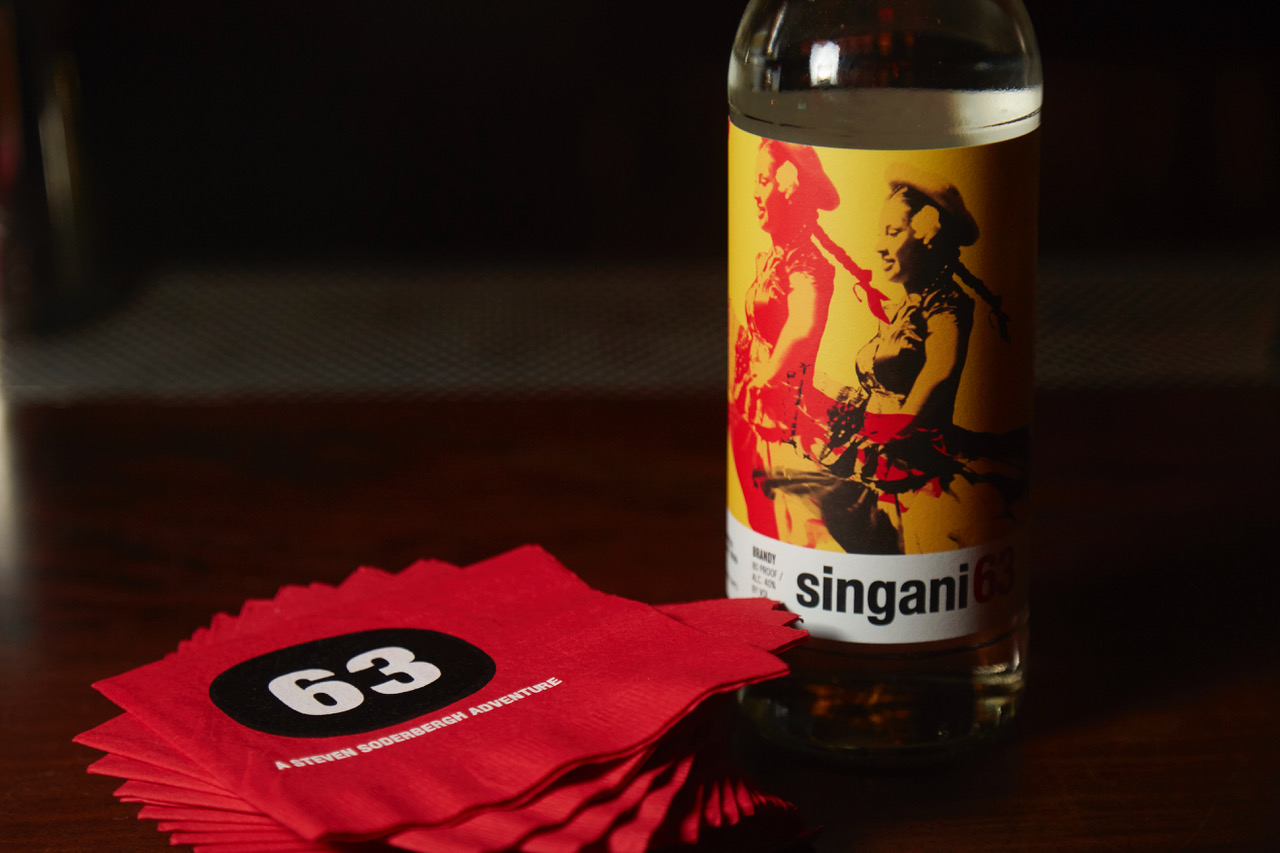The Local newsletter is your free, daily guide to life in Colorado. For locals, by locals.
Forget Hollywood. The place for cinephiles to be on the afternoon of Wednesday, March 21, was not Grauman’s Chinese Theatre in Los Angeles, but the Source, where none other than famed director Steven Soderbergh held court at RiNo Yacht Club. If they happened to be boozehounds, they might have recognized Alex Day, partner of celebrated New York—and now Denver!— bar Death & Co., beside him. The occasion marked the local debut of Soderbergh’s new, must-have spirit brand, Singani 63.
Though often compared to brandies like pisco, singani is a category unto itself, made from white Muscat of Alexandria grapes that by law must be grown and distilled at 5,000 or more feet above sea level. The spirit was unavailable outside of its native Bolivia—that is, until now. Soderbergh was introduced to singani in Spain, on the set of the 2008 biopic Che by his casting director, who, he says, “had to buy a bottle on the black market in the Bolivian quarter of Madrid.” It was love at first sip: “I was struck by this three-act response I had to it. First, there was its unique aromatic bouquet; second was how active and complex it was on the palate. And then, as a vodka drinker, I was accustomed to the burn—I considered that the price of entry. But this just disappeared.”

His passion for what he calls “my desert-island spirit” grew such that, “near the end of the shoot, someone floated the idea of my becoming an importer. Not knowing what it entailed, I said yes.” Several years and bureaucratic hurdles later, Singani 63—a 40 percent ABV spirit made from estate-grown grapes by fourth-generation producer Casa Real—came to be. The name, Soderbergh claims, is an allusion to “my lucky number. As you walk around in the world, you’ll start to notice how often ‘63’ appears.” In fact, the brand’s existence is itself a matter of sheer luck, as Soderbergh sees it: “In my mind, this grape found its ultimate expression in what is frankly a terrible place to grow anything. And then, even more random, I get involved! It’s a strange story about serendipity.”
You can find Singani 63 not only at the Source—where Mary Allison Wright and McLain Hedges will sell it at the Proper Pour ($34) and feature it in RiNo Yacht Club cocktails like the Good Hearted Woman (recipe below)—but at several other local bars, as well. Big Trouble at Zeppelin Station includes it in the rum-based blue Hawaii; Retrograde beverage director Cory Leicester says that it complements the tart fruit components of tiki drinks while “adding a layer of complexity” to gin cocktails. Bonanno Concepts’ Adam Hodak is also using it as a gin substitute at Osteria Marco, and he’s currently barrel-aging it for future use at Green Russell. And Death & Co. Denver will feature singani in the Curtis Park Swizzle with Amontillado Sherry, Falernum, and ginger.
RiNo Yacht Club’s Good Hearted Woman
1 ounce spent coffee–infused Singani 63*
1/2 ounce Ford’s gin (or other London dry style)
1/2 ounce grapefruit juice
1/4 ounce lemon juice
3/4 ounce Small Hand Foods tonic syrup
Small pinch salt
Lemon twist
Place all ingredients but the twist in a shaker tin; add ice. Shake and strain into a cocktail glass. Garnish with the twist.
*To infuse the Singani, add one bottle to the grounds from a batch of brewed coffee and let sit for 30 minutes. Strain through cheesecloth and re-bottle. Note that used grounds have been washed of their acidity and contribute only earthy aromatics.








